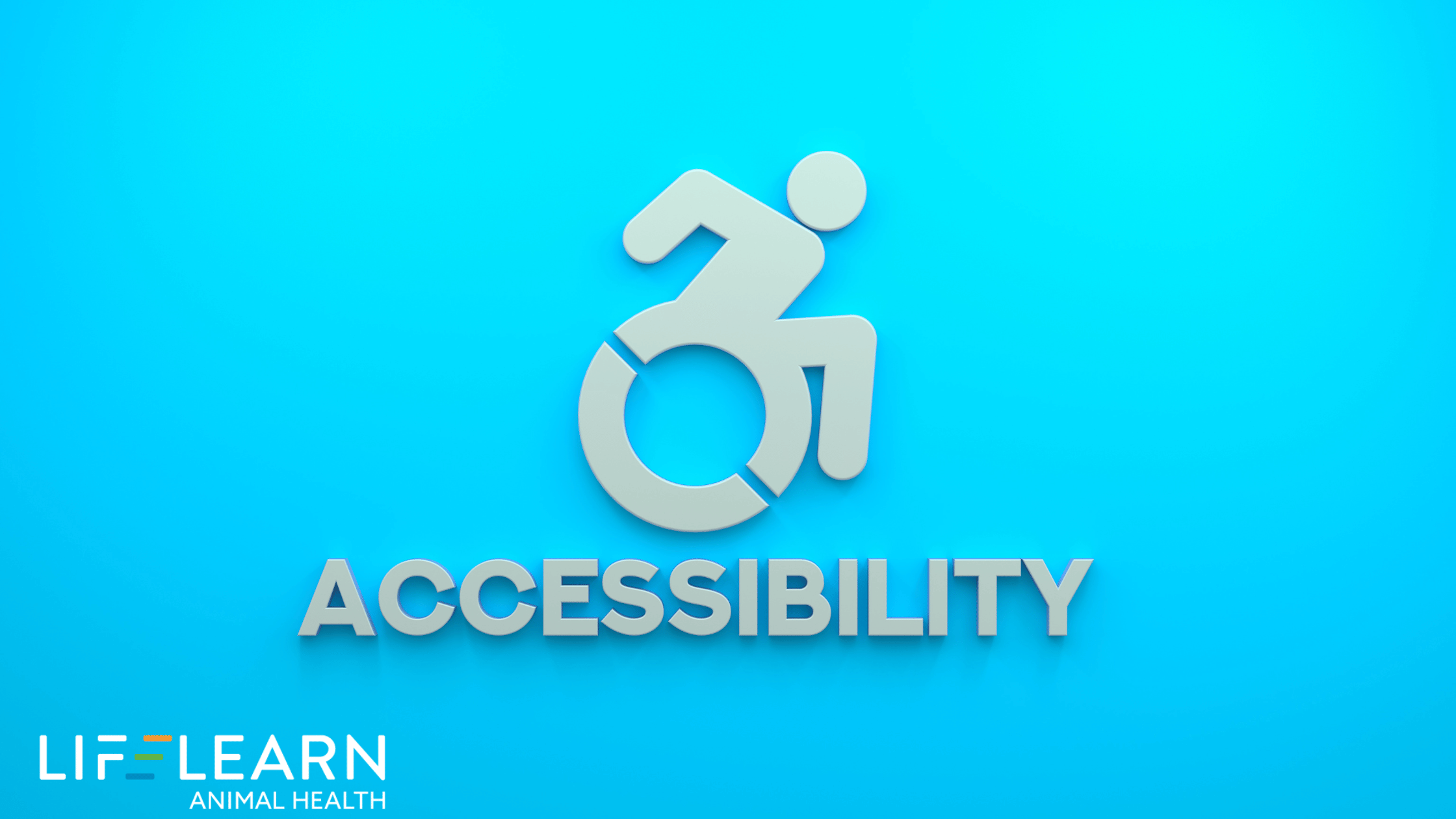Learn what web accessibility means for veterinary practices, why it’s critical to modern website design, and how LifeLearn helps you create a website that works for every pet owner.
What Is Web Accessibility?
Web accessibility means designing veterinary websites that are usable by all pet owners, including those with disabilities. From visual impairments and hearing loss to cognitive limitations and mobility challenges, accessibility ensures everyone can engage with your website. It’s more than usability—it’s about inclusivity.
Creating an accessible website involves adhering to specific guidelines, like the Web Content Accessibility Guidelines (WCAG), and ensuring your veterinary web content is easy to perceive, navigate, and understand—with technology like screen readers, mobile apps, and keyboard navigation in mind.
In the words of accessibility advocates, an accessible website removes digital barriers, allowing every user to get the information they need without frustration. This is especially vital in veterinary care, where pet health decisions depend on quick and reliable access to information on a web page or application.
Who Sets Web Accessibility Standards?
Web accessibility is guided by the Web Accessibility Initiative (WAI), part of the World Wide Web Consortium (W3C). This global group sets international standards for the internet, including the WCAG. Their mission is to ensure equal opportunity for all users on the World Wide Web.
In the U.S., accessibility is legally backed by the Americans with Disabilities Act (ADA) and the Section 508 Amendment to the Rehabilitation Act of 1973—making accessibility not just best practice, but a legal requirement for public-facing websites, especially in the healthcare and education sectors.
Why Accessibility Matters for Veterinary Practices
Roughly one in six people lives with a disability—meaning your veterinary website might be excluding a large group of potential clients. Accessible websites ensure everyone can read about services, schedule appointments, download a PDF form, or access pet care information from a mobile device or web browser.
At LifeLearn, we believe website accessibility isn’t just a feature—it’s a responsibility. Accessible design promotes:
- Equal access to care and information
- Greater trust and credibility with clients
- Stronger compliance with web accessibility legislation like ADA Title III, AODA, and EN 301 549
Failing to meet standards like WCAG or Section 508 compliance can result in reputational damage and even lawsuits. In fact, inaccessible digital content can violate laws covering information technology, equal opportunity, and community access.
Pro Tip: Ensure your mobile experience is just as accessible as your desktop site by testing functionality on various user agents and mobile apps like Google Chrome.
Web Accessibility Standards You Should Know
The WCAG framework follows four essential principles—perceivable, operable, understandable, and robust—that apply to websites, web applications, and multimedia interfaces.
- Perceivable: Include alt text and audio descriptions for images and videos. Use braille support or alternative formats for visually impaired users.
- Operable: Build interfaces that work without a mouse. Ensure keyboard navigation and screen reader compatibility using semantic HTML and CSS.
- Understandable: Write with cognition in mind—use clear language and ensure forms and instructions are simple to follow.
- Robust: Make sure your site operates across different browsers, devices, and assistive technologies. Leverage proper markup to support APIs and software integration.
Pro Tip: Ensure that your site supports modern JavaScript functions without breaking accessibility, and run frequent usability testing to evaluate real user experiences.
How to Make Your Veterinary Website More Accessible
To support accessible web development, follow these key actions:
- Apply correct semantics and HTML tags
- Use color combinations that accommodate color blindness
- Offer downloadable documents (like PDFs) in accessible formats
- Support alternative input methods for those using computer hardware alternatives or assistive technology
- Provide a consistent user interface across all devices
Pro Tip: Include an accessibility statement on your site that outlines your commitment to web accessibility compliance.
Tools to Evaluate Accessibility on Your Veterinary Site
These tools evaluate your website’s adherence to web standards and identify improvements:
- WAVE by WebAIM: Evaluates web pages for WCAG violations and highlights issues visually.
- SortSite: Scans your site for HTML, CSS, and accessibility problems—ideal for early development.
- DYNO Mapper: Conducts sitemap audits and tracks keyword and performance data.
- A11Y Color Contrast Validator: Verifies color contrast to accommodate users with low vision or cognitive impairment.
Use these tools alongside manual testing to catch issues software might miss.
Real Examples of Accessible Veterinary and Healthcare Websites
- CDC.gov: Uses accessible web design and supports assistive software for people with hearing loss and deafness.
- The White House: Offers flexible user interface adjustments like text size and contrast toggles.
- W3C: Provides best-in-class examples of international standard compliance, including accessibility for multimedia and document-based content.
Veterinary clinics using LifeLearn’s WebDVM already benefit from:
- ADA-compliant website templates
- Accessible content and navigation
- Built-in support for screen readers and keyboard-only navigation
- Structured layouts that follow global web accessibility directives
Tips for Creating Inclusive Web Experiences
- Understand the role of cognition and cognitive impairments when writing web copy
- Design for auditory limitations by supporting captions, transcripts, and audio descriptions
- Structure documents and multimedia elements to match both user expectations and WCAG specifications
- Include support for braille devices, screen magnifiers, and text resizing tools
- Prioritize education and training for your web development team around accessibility topics
Pro Tip: Partner with accessibility consultants who specialize in healthcare and information technology compliance.
Making Veterinary Websites Equitable for All
Accessibility isn’t just a technical requirement—it’s a reflection of your practice’s values. A website that embraces web accessibility legislation and inclusive design principles ensures every pet owner feels welcomed and empowered.
Ready to future-proof your website for all users?
Book a free consultation and learn how LifeLearn can help your practice deliver an accessible, high-performance veterinary experience online.






